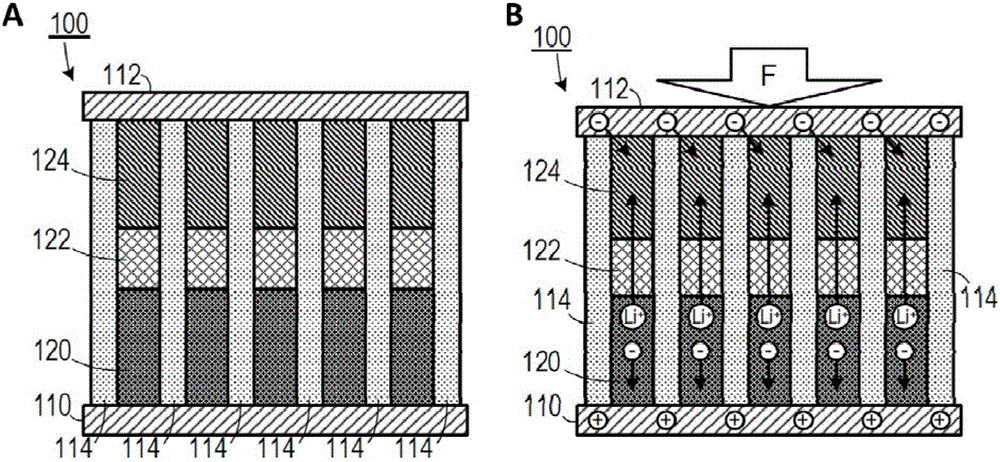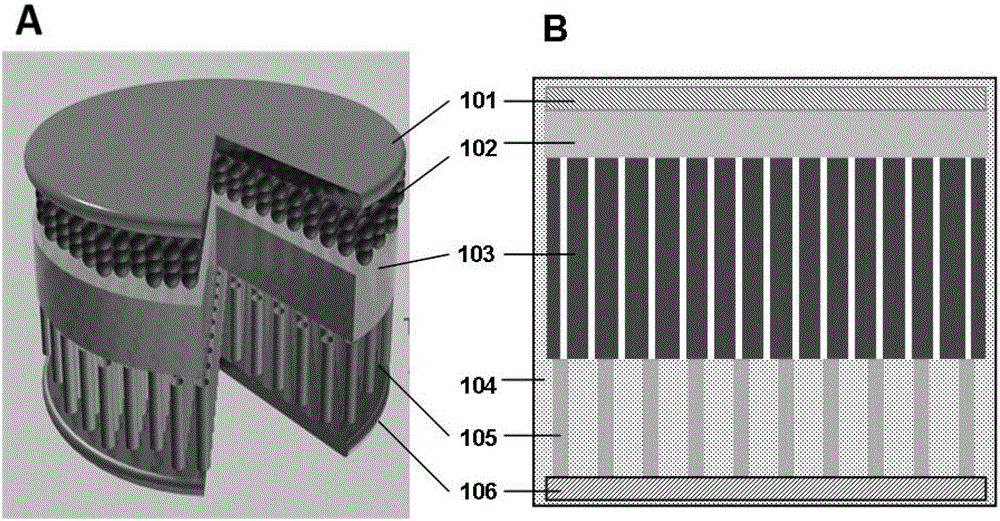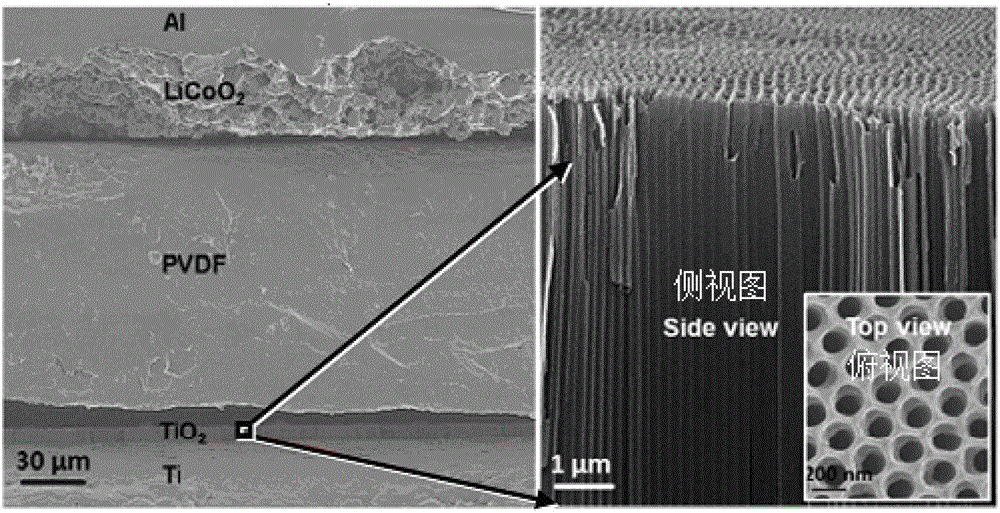an energy pack
An energy and negative electrode technology, applied in the field of energy packs, can solve the problems of energy loss, complex structure of energy storage devices, and inability to generate electric energy by itself, and achieve the effect of expanding the application range and simple structure
- Summary
- Abstract
- Description
- Claims
- Application Information
AI Technical Summary
Problems solved by technology
Method used
Image
Examples
Embodiment 1
[0037] The energy package in this embodiment is based on the fact that the positive electrode material is LiCoO 2 particles, the anode material is TiO 2 Nanotube arrays (or silicon nanowire arrays) for Li-ion battery construction. For a schematic structural diagram of the energy pack of this embodiment, see figure 2 , wherein, Figure A is a schematic diagram of the overall structure of the energy pack, Figure B is a cross-sectional view of the energy pack, and the positive pole of the energy pack is covered with LiCoO 2 The metal foil 101 of the particles 102, the negative electrode is prepared with a metal foil 106 with nanostructures 105 on the surface opposite to the positive electrode, and the LiCoO on the surface of the positive electrode 2 The particles 102 and the nanostructures 105 on the surface of the negative electrode are arranged face to face. The positive and negative electrodes are separated by an electrolyte solution 104, and a piezoelectric ion transport l...
Embodiment 2
[0049] The energy pack of this implementation example is still an electrochemical storage device based on a lithium-ion battery, and the specific structure is as follows: Figure 6 As shown, among them, Figure A is a schematic diagram of the overall structure of the energy pack, and Figure B is a cross-sectional view of the energy pack. The positive electrode of the energy pack 200 is prepared with LiCoO on the surface 2 The metal foil 212 of particles 216, the negative electrode is prepared with the metal foil 210 with nanostructure 214 on the surface opposite to the positive electrode, and the LiCoO on the surface of the positive electrode 2 The particles 216 and the nanostructures 214 on the surface of the negative electrode are arranged face to face. The positive and negative electrodes are separated by an electrolyte, and include a piezoelectric ion transport layer 218 between the positive and negative electrodes, and the piezoelectric ion transport layer also includes n...
Embodiment 3
[0056] The energy pack of this embodiment can also be realized by a supercapacitor system. Supercapacitor systems generally have a similar structure to lithium-ion batteries: both have two electrode sheets and a separator placed in between. The difference is that the energy storage of supercapacitors is mainly achieved by the physical adsorption of carriers and counter ions at the electrode / electrolyte interface leading to an electric double layer. In a supercapacitor, the two electrodes are usually the same substance, and the electrolyte can be either an aqueous or an organic solution.
[0057] The energy pack in this embodiment uses a piezoelectric ion transport layer instead of the diaphragm of a supercapacitor. For a schematic diagram of its structure, see Figure 7 , wherein, Figure A is a schematic diagram of the overall structure of the energy pack, and Figure B is a cross-sectional view of the energy pack. The anode of the energy pack 400 is a metal material 401 prep...
PUM
 Login to View More
Login to View More Abstract
Description
Claims
Application Information
 Login to View More
Login to View More - R&D
- Intellectual Property
- Life Sciences
- Materials
- Tech Scout
- Unparalleled Data Quality
- Higher Quality Content
- 60% Fewer Hallucinations
Browse by: Latest US Patents, China's latest patents, Technical Efficacy Thesaurus, Application Domain, Technology Topic, Popular Technical Reports.
© 2025 PatSnap. All rights reserved.Legal|Privacy policy|Modern Slavery Act Transparency Statement|Sitemap|About US| Contact US: help@patsnap.com



